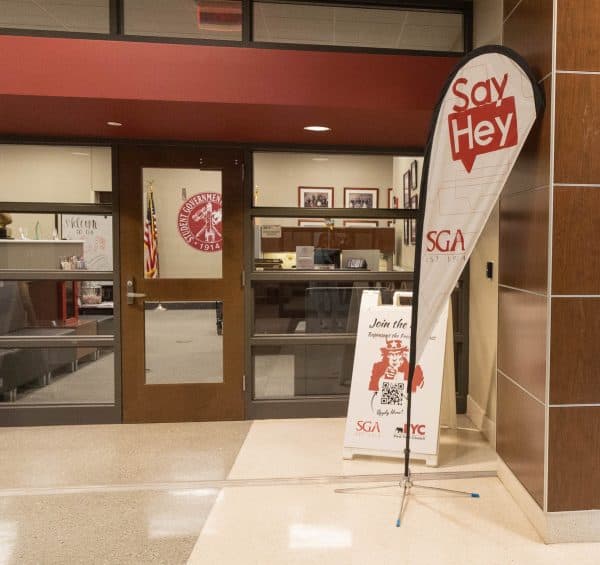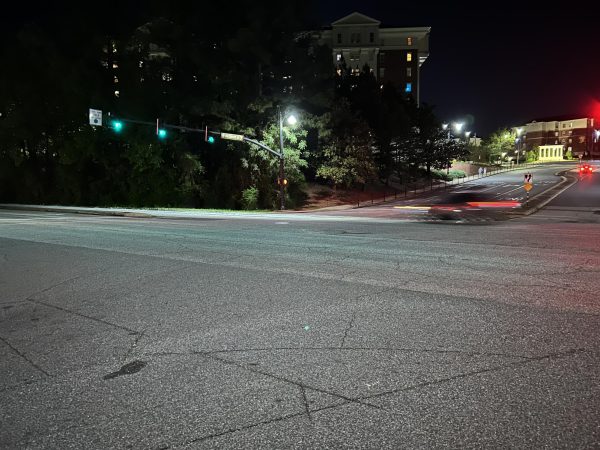‘It’s really getting old’: The ongoing reckoning of UA building namesakes
As the Black Lives Matter movement surged across the country, a call for change emanated from UA students. Along with protests came an onslaught of petitions that urged for a change to academic buildings’ whose names have racist origins.
These petitions did not go unnoticed. The UA System Board of Trustees has since created a committee to review building names and sent a survey for staff, students and alumni to suggest new names for buildings on its campus.
According to a petition created by UA student Mackenzi Dugan, the survey, which closes August 3 at midnight, includes a collection of suggestions produced by the local chapter of United Campus Workers Alabama based on the work of Hilary Green, an associate professor of history in the Department of Gender and Race Studies and the co-program director of the African American studies program.
“This change is a long time coming, and so many people have worked tirelessly for years to help make this change happen,” Dugan said in the survey’s description.
Renaming Buildings
On June 3, one UA student drafted a petition to “Rename Buildings with a Racist History on the University of Alabama Campus.” The petition’s description, drafted by Mackenzi Dugan, opens by citing the words of the Capstone Creed to highlight the hypocrisy of these “guiding principles.”
She expressed her belief that it is hypocritical to ask students to recite a creed that promotes equity and inclusion when they attend classes in buildings named after Ku Klux Klan leaders, segregationists and slave owners.
Dugan drafted the petition with the goal of gaining 25,000 signatures and presenting it to the University’s president, Stuart Bell. It received more than 20,000 signatures and sparked the creation of similar petitions from other students. Dugan, whose petition has gained the most traction so far, shared links on Instagram to support the renaming of Nott Hall and Graves Hall.
Her petition cites examples of the campus buildings she wants to see renamed, including Morgan Hall.
John Tyler Morgan is the namesake of this building that houses the University’s department of English. He was a general in the Confederate Army and a six-term U.S. senator. He used his legislative power to promote Jim Crow laws, states rights and racial segregation.
Morgan was also heavily involved with the KKK and held the title of “grand dragon” for the statewide chapter in 1872. Susan Lawrence Davis, the daughter of the founder of the Alabama chapter, confirmed his involvement in her account of the organization.
For supporters of these petitions, Morgan Hall is one example of the lingering presence of the University’s long history of racism. Dugan’s petition points to similar histories behind the namesakes of buildings like Manly and B.B. Comer.
A History of Petitions
This demand for change is not the first of its kind on campus. Morgan Hall has found itself at the center of several of these conversations.
A campaign called “We Are Done” emerged on campus in 2015. The group described itself as “a coalition of concerned students and faculty demanding that The University of Alabama seek new ways to address issues of racism and discrimination.”
With the help of a petition, the student activists brought attention to the history of Morgan Hall and demanded it be renamed and the portrait of its namesake be removed from the building. Following months of conversations, the portrait of Morgan was removed and relocated to the University’s Hoole Special Collections Library; the name remained unchanged.
A new petition surfaced within months of the portrait’s removal. It called for the building to be renamed in honor of Harper Lee, an alumna of the University, and it gained attention from national news organizations like The Washington Post and The New York Times.
Black Lives Matter
These efforts from We Are Done in the final months of 2015 coincided with a critical point in the Black Lives Matter movement. While UA students signed petitions to rename academic buildings, Black Lives Matter activists protested the shooting of Jamar Clark.
Five years later, new petitions to rename campus buildings circulated as Black Lives Matter activists protest the murder of George Floyd, another Black man killed while in custody of Minneapolis police officers on May 25, 2020.
Confederate Monuments
Soon after the petition to rename buildings was released, a petition to remove Confederate monuments from campus was started by another student, Anna Beth Peters. It received more than 4,000 signatures in one week and resulted in the Board of Trustees authorizing the relocation of three plaques from campus.
The plaques, one of which was located on a stone in front of Gorgas Library, were dedicated in 1914 and commemorated UA students who served in the Confederate Army and Student Cadet Corp. Transcripts of Crimson White coverage provide a first-hand perspective of the dedication ceremony.
Hallowed Grounds
In the midst of the plaques’ removal, another petition surfaced with the stated goal of getting the University to fund the Hallowed Grounds Tour. The tour was created by professor Green and “seeks to shed light onto the lives, experiences, and legacy of the many enslaved men, women, and children who lived, worked, and even died at the University of Alabama.”
UA Leaders Speak Out
Many UA student groups and campus leaders released statements in the days following the deadly arrest of Floyd.
In a campus-wide email, President Bell said he “pledges to continue promoting a safe and respectful environment for every member of our campus community, and to support those who are particular targets of hate and racism.”
Student Government Association President Demarcus Joiner, “speaking as a black man in America,” released a statement on May 31, urging students to use their voices to stand as allies for those who have been historically marginalized. The SGA released an additional statement in support of the petition to rename campus buildings.
The day after the SGA voiced support of the petition, Bell and the Board of Trustees released a joint statement announcing the appointment of a select group of Trustees to study and review the names of buildings on campus.
The group, chosen by the Board’s president pro tem Ronald Gray, includes Judge John England Jr., Barbara Humphrey, Vanessa Leonard, Harris Morrissette, Scott Phelps and Stan Starnes. They will report recommended changes for all UA System’s campus buildings to the Board at an upcoming meeting.
On June 25, the UA football team released a video written by offensive lineman Alex Leatherwood captioned, “In this moment in history, we can’t be silent.” The video showcased a collection of players and head coach Nick Saban standing against the racial injustice, violence and brutality occurring in the United States, “We speak for justice for fairness for equality for greater understanding.” The video ended with the repetition of one sentence, “All lives can’t matter until Black lives matter.”
A Boiling Point
For Jessica Hauger, a UA alumna and doctoral candidate at Duke University, the steps toward renaming buildings have been exciting.
During her time at the University in 2016, Hauger created a petition to rename Morgan Hall after UA alumna Harper Lee who died recently that year. The petition gained over four thousand signatures and garnered attention from numerous news outlets.
While UA officials did acknowledge her petition, Hauger said she never heard anything directly.
In a WBRC article, President Bell said the information was being examined as part of their strategic planning process that would “probably” be looked at later in the year.
“People were talking on different levels with journalists, but there was never any university-wide response to this at all or any communication with me,” Hauger said.
While the lack of response in the past was disappointing, she was hopeful for change following the recent removal of the confederate monument from the campus.
“Five years ago, when I was doing this, it was certainly not the first time. Black students have been organizing at UA and across the country as different campuses to make these spaces more equitable forever and just,” Hauger said. “I hope the university administration really sees the absolute need for them to take accountability for their former reaction to this and to make moves on this now because it’s really getting old.”













